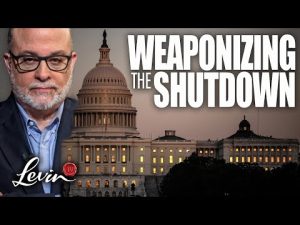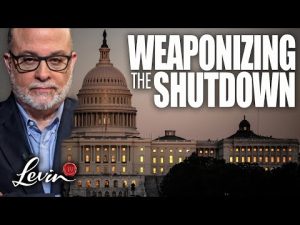**Markets in Turmoil: The Ripple Effects of U.S.-China Tensions**
In a whirlwind 72 hours, the financial markets have experienced more ups and downs than a roller coaster at a theme park. Investors are scratching their heads as they navigate the chaotic landscape dominated by intertwining global conflicts and economic uncertainties. The stakes? U.S.-China relations, European tech regulations, and, of course, the price of goods that American consumers could soon see skyrocketing.
It all kicked off on a seemingly normal Friday morning when China decided to stir the pot. In a bold move, they announced they would implement special docking fees on all American ships entering Chinese ports. This isn’t just a simple fee; it translates to higher prices for American goods coming out of China. And if there’s one lesson everyone should remember about economics, it’s this: when businesses face increased costs, those costs ultimately trickle down to consumers. So, as the Chinese push for more cash flow, everyday Americans could soon feel the financial pinch at checkout lines across the nation.
In response to this aggressive maneuver, former President Trump emerged from the political shadows with what he knows best—tariffs. He waved his metaphorical sword, threatening to impose a staggering 100% tariff on Chinese goods in retaliation. As expected, this sent shockwaves through the stock markets. Investors were not thrilled, and major stocks, including Bitcoin and the S&P 500, took a nosedive faster than a chicken at a County Fair. It was reminiscent of “Liberation Day 2.0,” with traders holding their breath in panic as they watched valuations plummet.
However, before the dust could even settle, Trump stepped back into the limelight to reassure everyone that things would stabilize. In less than two hours, he claimed that this escalation would be resolved. It’s like watching a magician do a disappearing act—just when you thought things couldn’t get worse, he promised a swift resolution. But, truth be told, this recurrent back-and-forth has become a hallmark of 2025, as market watchers have become weary of the same old rhetoric without real solutions.
Meanwhile, China, undeterred by this tit-for-tat, reinforced their position. They made it clear that they were sticking to their guns regarding the docking fees. And things took an interesting turn when Europe decided to step in. The European Union, perhaps eager to lend a hand to the U.S., announced a new regulation requiring that any Chinese technology entering Europe must share its intellectual property. For China, this is akin to asking a magician to reveal his secrets—definitely a no-go. As European countries stand firm, a new chapter of economic posturing emerges, and this puts even more pressure on the already strained U.S.-China relationship.
As all this unfolded, consumers at home began to feel the effects. New tariffs went into place, and prices for everyday goods—think appliances and kitchen items—are already skyrocketing. With no grace period for businesses to prepare, it seems families may soon be paying more for everything from blenders to dishwashers. Inflation has already troubled many Americans, and with new costs just around the corner, it looks like there could be more turbulence ahead.
In closing, the fever pitch surrounding the economy and inflation becomes more apparent with each passing day. While Trump attempts to address these challenges, polls indicate that public opinion might not be so rosy. With the economy hanging in the balance, the question remains: Is he navigating this storm successfully, or are we all just along for the ride? As we sit at this crossroads, it’s worth pondering how all of this will play out and what it means for American consumers in the months ahead. Buckle up, everyone—the ride’s just getting started!







